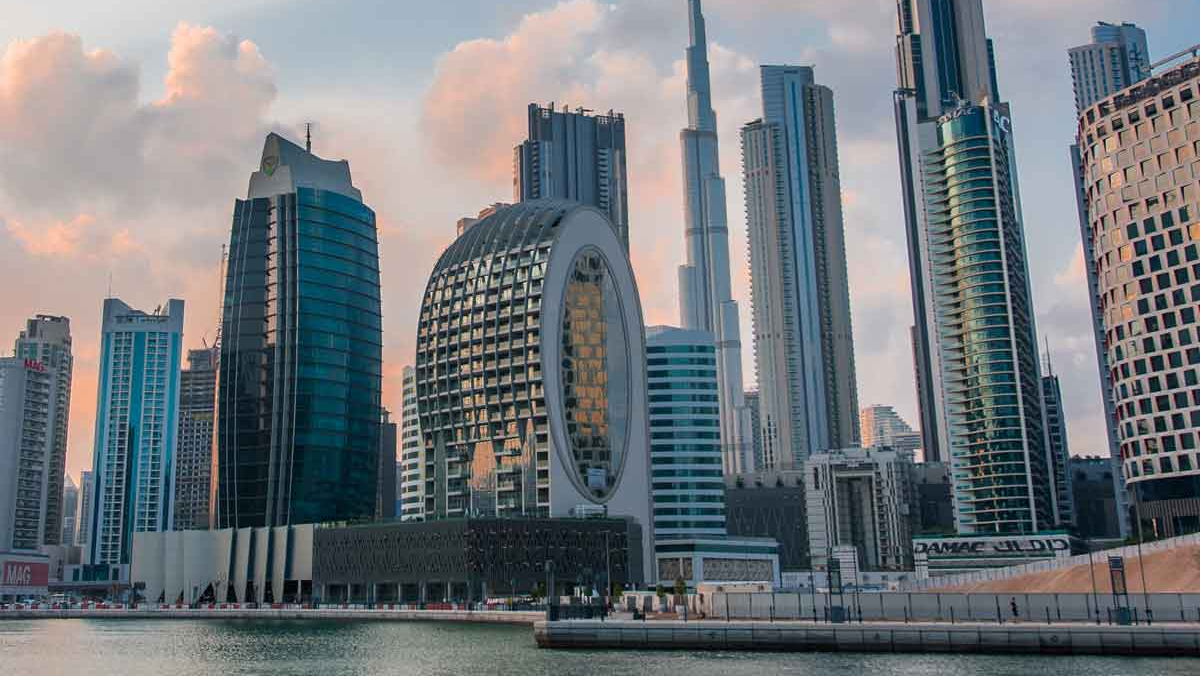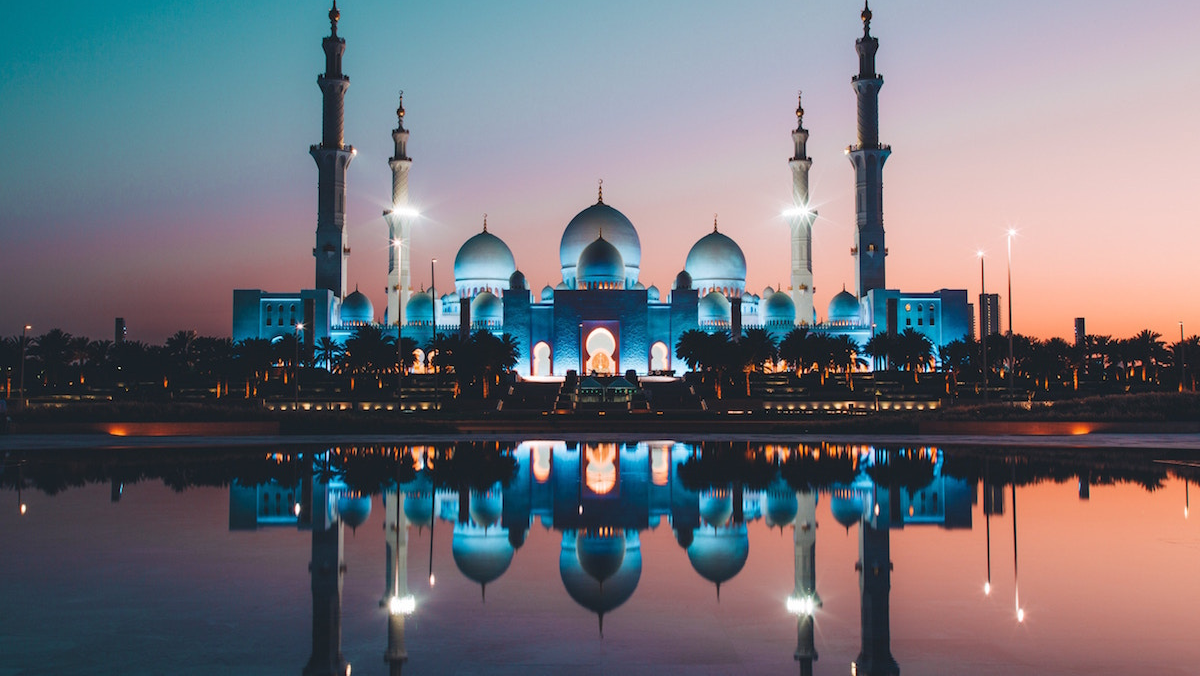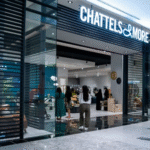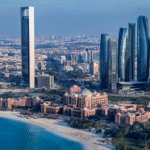Now Reading: UAE Property Market: 5 Tax Trends Shaping City Development Strategies in 2025
-
01
UAE Property Market: 5 Tax Trends Shaping City Development Strategies in 2025
UAE Property Market: 5 Tax Trends Shaping City Development Strategies in 2025

Table of Contents
The UAE’s AED 800B real estate market in 2024 (20% YoY growth, 150,000+ transactions) offers apartments (AED 172K–20M) and villas (AED 800K–100M) with 5–10% ROI and 3.5–8% appreciation by 2026. Freehold laws since 2002 (Dubai) and later in other emirates allow 100% ownership for all nationalities in designated zones, driving demand (55% from GCC, India, Europe, Russia).
Tax policies, including zero personal income, capital gains, or property taxes, and Real Estate Transaction Tax (RETT) exemptions for off-plan projects and first-time buyers (saving AED 3.4K–400K), enhance investor returns. Recent 2024–2025 tax shifts, such as VAT exemptions on residential sales and free zone corporate tax benefits (0% on qualifying income), align with city development strategies in Dubai, Abu Dhabi, Sharjah, Ajman, and Ras Al Khaimah (RAK).
These strategies support UAE Vision 2040, targeting 30M tourists by 2030. This guide analyzes five tax trends shaping UAE city development strategies, detailing their impact on real estate projects, investor incentives, and urban planning, supported by 2024–2025 data.
1. Zero Personal Income and Capital Gains Tax
- Description: The UAE maintains zero personal income and capital gains taxes, allowing investors to retain full profits from property sales and rental income. This policy, unchanged in 2024–2025, supports high-net-worth individuals (HNWIs) and foreign investors, with 55% of demand from India, GCC, Europe, and Russia.
- Impact on City Development: Encourages luxury and mixed-use projects like Burj Royale (Downtown Dubai, AED 1M–5M, 6–8% ROI) and Mandarin Oriental Residences (Saadiyat Island, Abu Dhabi, AED 2.5M–15M, 6–8% ROI). Cities prioritize iconic developments to attract HNWIs, aligning with Dubai’s D33 (doubling economy by 2033) and Abu Dhabi’s Vision 2030 (24.49B USD tourism revenue by 2030).
- Investor Incentives: No tax on rental income (AED 30K–500K/year) or property sales (AED 172K–100M). Savings of AED 50K–5M compared to markets with 20–40% capital gains tax (e.g., UK, US). Supports Golden Visa eligibility (AED 2M+ for 10-year residency).
- Urban Planning: Drives high-density zones like Downtown Dubai (AED 2,500–6,000 psf) and Al Zorah (Ajman, AED 2,133–5,900 psf), with smart tech and LEED-certified designs to attract global investors. Boosts tourism-driven rentals (10–15% growth in 2025).
- Example: A Dubai Marina apartment (AED 1M) sold for AED 1.2M in 2026 yields AED 200K tax-free profit, compared to AED 120K–160K after tax in high-tax markets.
2. Real Estate Transaction Tax (RETT) Exemptions
- Description: RETT exemptions (2% in Abu Dhabi, Sharjah, Ajman, RAK; 4% in Dubai) for off-plan projects and first-time buyers save AED 3.4K–400K per transaction. Introduced in 2023–2024, these exemptions encourage early investment in off-plan developments (50% of 2024 transactions).
- Impact on City Development: Fuels off-plan projects like Yas Riva (Abu Dhabi, AED 1.2M–4.5M, handover Q2 2026) and Mirasol (RAK, AED 750K–3M, handover Q2 2028). Cities prioritize master-planned communities with flexible payment plans (1% monthly or 40/60) to boost absorption (80% in 2024).
- Investor Incentives: Savings of AED 12K–400K on purchases (e.g., AED 24K for a AED 1.2M Yas Riva apartment; AED 60K for a AED 3M Al Zorah villa). Encourages bulk investments in affordable zones like Ajman New Venture Free Zone (AED 172K–2.5M, 8–10% ROI).
- Urban Planning: Supports mixed-use developments like Aljada (Sharjah, AED 650K–2M, 6–8% ROI) with retail, schools, and parks. Aligns with Sharjah Vision 2030 and RAK Vision 2030, targeting 1M and 3.4M tourists by 2030, respectively.
- Example: An off-plan purchase in Quattro Del Mar (RAK, AED 875K) saves AED 17.5K in RETT, enhancing ROI from 6–8% to 8–10% with reinvested savings.
3. VAT Exemptions on Residential Sales
- Description: A 5% VAT exemption on residential sales (introduced 2018, expanded 2024) applies to first sales of apartments and villas. Investors can recover VAT on off-plan construction costs (AED 3K–100K/year), reducing development expenses.
- Impact on City Development: Lowers costs for developers, enabling projects like Bloom Living (Abu Dhabi, AED 600K–3M, handover Q3 2025) and Ajman Creek Towers (Ajman, AED 630K–1.5M, handover Q4 2026). Cities focus on affordable and mid-range housing to meet expat demand (60% of buyers).
- Investor Incentives: Savings of AED 30K–1M on purchases (e.g., AED 50K for a AED 1M JVC apartment). VAT recovery on off-plan projects (e.g., AED 3K–100K/year for developers) reduces prices, boosting affordability in zones like Dubai South (AED 800K–5M, 6–8% ROI).
- Urban Planning: Encourages high-density residential zones like Jumeirah Village Circle (JVC, Dubai, AED 1,200–1,800 psf) and Tilal City (Sharjah, AED 1,000–1,250 psf). Supports UAE Vision 2040’s urban growth and sustainability goals (SDG 11).
- Example: A AED 1M apartment in Dubai Hills Estate saves AED 50K in VAT, increasing net ROI from 5–7% to 6–8% when combined with rental income (AED 80K/year).
4. Free Zone Corporate Tax Benefits
- Description: Since June 2023, a 9% corporate tax applies to mainland profits above AED 375K, but free zone entities under Qualified Free Zone Person (QFZP) status enjoy 0% corporate tax on qualifying income (non-mainland revenue <5% or AED 5M). Free zones like DIFC (Dubai), ADGM (Abu Dhabi), and RAKEZ (RAK) support mixed-use investments.
- Impact on City Development: Drives commercial and residential projects in free zones like DIFC (Dubai, AED 2M–15M, 5–7% ROI) and Ajman Free Zone (AFZ, AED 630K–3M, 7–10% ROI). Cities prioritize mixed-use zones with offices, retail, and apartments to leverage tax benefits, aligning with Dubai’s D33 and Ajman Vision 2030.
- Investor Incentives: Free zone entities save 9% on profits (e.g., AED 90K/year on AED 1M commercial rental income). Encourages corporate investments in zones like Dubai South (AED 800K–5M, 6–8% ROI) and Ajman Media City (AED 496K–2M, 7–9% ROI).
- Urban Planning: Supports business hubs like One RAK Central (RAK, AED 650K–1.5M, 7–9% ROI) and Business Bay (Dubai, AED 1.2M–10M, 6–8% ROI) with smart tech and green designs. Enhances economic diversification for 30M tourists by 2030.
- Example: A DIFC office (AED 2M) generating AED 500K/year in rent saves AED 45K in corporate tax via QFZP status, boosting net returns by 2–3%.
5. Domestic Minimum Top-up Tax (DMTT) Alignment
- Description: Introduced in 2024 to comply with OECD Pillar Two, DMTT applies a 15% top-up tax to multinational enterprises (MNEs) with revenues over €750M, ensuring global tax fairness. Small investors and local entities remain unaffected, with 0% corporate tax in free zones and 9% on mainland profits above AED 375K.
- Impact on City Development: Encourages SME-focused projects like Ajman New Venture Free Zone (AED 172K–2.5M, 8–10% ROI) and Dubai South (AED 800K–5M, 6–8% ROI). Cities diversify to attract smaller investors, balancing MNE-driven projects like Rivage (Abu Dhabi, AED 1M–10M, 6–9% ROI).
- Investor Incentives: Small investors avoid DMTT, retaining full profits in free zones like RAKEZ (RAK) and AFZ (Ajman). Savings of AED 50K–500K/year for SMEs compared to MNEs facing 15% tax. Supports investor visas (AED 250K+ in Ajman; AED 750K+ elsewhere).
- Urban Planning: Promotes affordable zones like JVC (Dubai, AED 600K–3M, 7–10% ROI) and Sharjah Sustainable City (AED 1.5M–3M, 6–8% ROI) with solar-powered homes and green spaces, aligning with UAE Vision 2040 and SDG 11.
- Example: An SME in Ajman Media City (AED 496K property) generating AED 100K/year in rent avoids DMTT and corporate tax via QFZP status, saving AED 15K/year compared to an MNE in a taxed jurisdiction.
Market Trends and Outlook for 2025
- Yields and Appreciation: UAE’s real estate offers 5–10% ROI and 3.5–8% appreciation, driven by AED 800B in 2024 transactions and 20% growth in H1 2025 (AED 800–6,000 psf). Short-term rentals grew 10–15%, long-term rentals 8–10%, with 80–85% occupancy due to tourism (17.1M visitors in Dubai 2024, 5M in Abu Dhabi).
- Tax and Freehold Environment: Freehold laws (2002 in Dubai, 2008 in Ajman) boost demand (55% from foreign investors). Zero personal income and capital gains taxes, RETT exemptions (2–4%, AED 3.4K–400K), and 5% VAT exemptions save AED 3.4K–2M. Free zones (DIFC, ADGM, RAKEZ, AFZ) offer 0% corporate tax for QFZP, while DMTT ensures OECD compliance for MNEs.
- Infrastructure Impact: Metro expansions, Al Maktoum Airport (Dubai), Etihad Rail (Abu Dhabi), and Ajman Port boost values by 10–15%. Amenities like Burj Khalifa, Yas Marina, and Al Zorah Golf Club drive rentals (AED 100–10,000/night).
- Investor Drivers: Limited supply (25,000 units by 2026), Golden Visa eligibility (AED 2M+ for 10-year residency, AED 250K+ for Ajman investor visa), and flexible payment plans (1% monthly or 40/60) fuel 55% of demand from India (20%), GCC (15%), and Europe (15%). Smart tech and sustainability (LEED certification) enhance appeal.
- Risks: Oversupply (25,000 units by 2026) and AML compliance costs (AED 5K–15K) pose a 5–8% correction risk in H2 2025. Mitigated by 80% absorption, escrow accounts (DLD, ARERA, RAK RERA), and developer credibility. Corporate tax (9% for profits over AED 375K) and DMTT (15% for MNEs) may impact large investors, though free zone structures minimize this.
- Regulatory Framework: DLD (Dubai), DMT (Abu Dhabi), ARERA (Ajman), and RAK RERA ensure transparency with digital title deeds and escrow laws for off-plan sales (handover 2025–2028). Freehold zones allow inheritance with no estate tax; DIFC Wills Service Centre recommended for non-Muslims. AML compliance requires KYC and source-of-funds verification.
Investment Strategy
- Diversification: Invest in Ajman New Venture Free Zone (AED 172K–2.5M, 8–10% ROI) or JVC (Dubai, AED 600K–3M, 7–10% ROI) for affordability, Yas Riva (Abu Dhabi, AED 1.2M–4.5M, 6.5–8% ROI) or Quattro Del Mar (RAK, AED 875K–3M, 6–8% ROI) for waterfront appeal, and DIFC (Dubai, AED 2M–15M, 5–7% ROI) or Al Zorah (Ajman, AED 1.28M–29.5M, 6–8% ROI) for luxury and commercial returns.
- Entry Points: Off-plan units (1% monthly or 40/60 plans) offer flexibility. Early investment maximizes appreciation as tourism and infrastructure mature.
- Tax Optimization: Hold properties personally to avoid 9% corporate tax or use free zone entities (DIFC, ADGM, RAKEZ, AFZ) for 0% corporate tax on qualifying income. Leverage RETT exemptions (2–4%, AED 3.4K–400K) and recover 5% VAT (AED 3K–100K/year) via UAE FTA registration. Consult advisors like Savills (middleeast@savills.com) or Miva Real Estate (info@miva.ae) for compliance.
- Process: Verify freehold status via DLD, DMT, ARERA, or RAK RERA portals. Pay 2–4% RETT (unless exempt) and registration fees (AED 2K–4K). Use platforms like Bayut.com, PropertyFinder.ae, or dxboffplan.com. Required documents: passport copy, proof of funds, no UAE visa needed. Documents must be translated into Arabic and legalized.
Conclusion
In 2025, five tax trends zero personal income and capital gains tax, RETT exemptions, VAT exemptions, free zone corporate tax benefits, and DMTT alignment shape UAE’s city development strategies, driving AED 800B in 2024 transactions and 20% growth in H1 2025. These trends support high-return projects like Burj Royale (Dubai), Yas Riva (Abu Dhabi), Aljada (Sharjah), Ajman Creek Towers (Ajman), and Mirasol (RAK), with prices from AED 172K–100M and 5–10% ROI.
Freehold laws enable global ownership, while tax savings (AED 3.4K–2M) and free zone benefits (0% corporate tax) maximize returns. Sustainability features (smart tech, LEED certification) align with UAE Vision 2040 and SDG 11.
Despite a 5–8% correction risk from oversupply, 80% absorption, escrow protections, and infrastructure (Metro, Etihad Rail, airports) ensure stability. With tourism-driven rentals (10–15% growth), these trends attract Indian, GCC, and European investors. UAE Property Market
read more: Ajman City Projects: 6 Free Zones Offering Tax-Free Residential Options in 2025






















